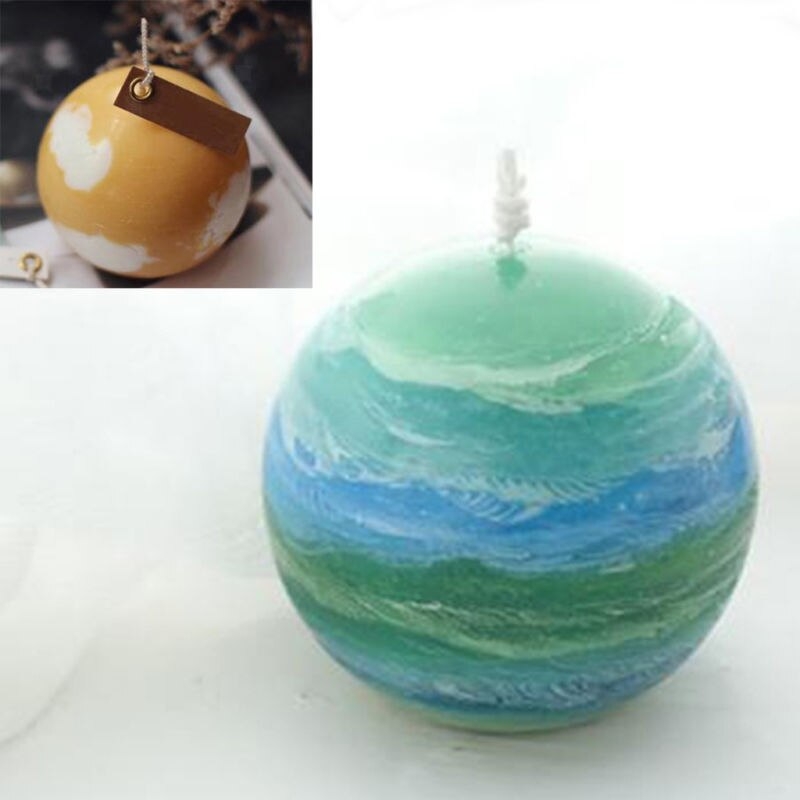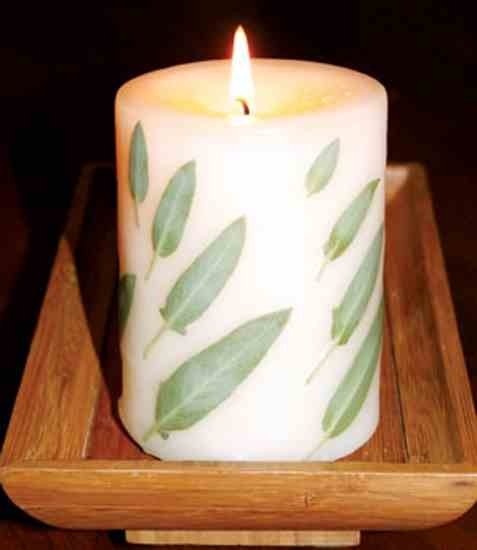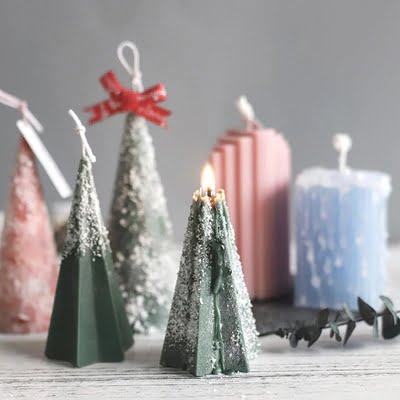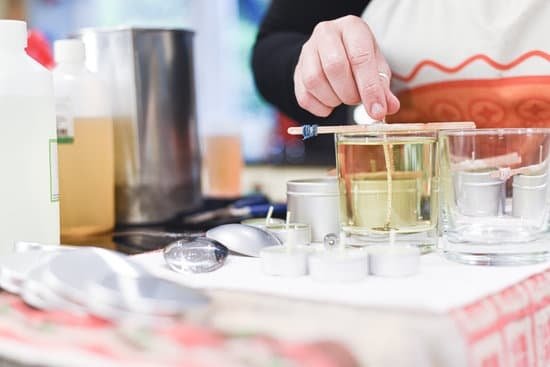When it comes to creating the perfect candle, one of the key factors to consider is the type of wax used in the process. Mixing waxes for candle making has become a popular technique among seasoned crafters and hobbyists alike. By blending different types of candle waxes, enthusiasts can create unique candles that offer a multitude of benefits.
There are various types of candle waxes available in the market, each with its own distinct characteristics and properties. Understanding the differences between paraffin, soy, beeswax, and other types of waxes is essential when embarking on your candle-making journey. By blending these waxes together, crafters can tap into the best qualities of each type to create candles that burn longer, cleaner, and emit pleasant scents.
The benefits of mixing waxes for candle making are plentiful. By combining different waxes, crafters can customize their candles to achieve desired features such as improved burn time, better scent throw, and enhanced aesthetic appeal. However, selecting complementary waxes and mastering the art of blending them requires careful consideration and experimentation. In this article, we will explore the advantages of mixing waxes for candle making and provide valuable tips for achieving optimal results.
Benefits of Mixing Waxes for Candle Making
When it comes to candle making, the type of wax used plays a crucial role in the quality and characteristics of the final product. Each candle wax has its own unique properties that can influence factors such as burn time, scent throw, and appearance. By mixing different types of waxes, candle makers can create candles with customized qualities that perfectly suit their preferences or target market.
One of the key benefits of mixing waxes for candle making is the ability to take advantage of the strengths of each type of wax. For example, soy wax is known for its clean burning properties and excellent scent throw, while beeswax has a natural honey-like fragrance and a beautiful golden color. By blending these two waxes together, you can create a candle that not only burns cleanly but also emits a lovely scent and has an attractive appearance.
Another advantage of mixing waxes is the opportunity to experiment and create unique formulations. By combining different waxes in varying ratios, candle makers can fine-tune the properties of their candles to achieve specific goals. Whether you want to increase burn time, enhance scent throw, or improve color vibrancy, mixing waxes allows for endless customization options. Additionally, blending waxes can help reduce costs since some types of wax are more expensive than others.
| Benefits | Examples |
|---|---|
| Customized qualities | Creating candles with specific properties |
| Strengths complementing each other | Combining soy wax’s clean burning with beeswax’s natural fragrance |
| Cost-effective options | Reducing expenses by blending less expensive waxes with pricier ones |
Tips for Selecting Complementary Waxes
When it comes to selecting complementary waxes for candle making, it is important to consider the characteristics of each type of wax and how they can work together to enhance your final product. Different waxes have varying melting points, burn times, fragrance retention, and appearance, so choosing the right combination can lead to unique and high-quality candles.
One popular option for mixing waxes in candle making is blending soy wax with beeswax. Soy wax is known for its clean burn and excellent scent throw, while beeswax provides a natural golden color and a longer burn time. By combining these two waxes in the right proportions, you can create candles that not only look beautiful but also perform exceptionally well.
Another great combination for candle making is paraffin wax with coconut wax. Paraffin wax has excellent scent throw and provides a smooth finish, while coconut wax offers a slower burn and a creamy texture. By mixing these two waxes together, you can achieve a balance between fragrance dispersion and burn time, resulting in candles that are both aromatic and long-lasting.
| Types of Waxes | Characteristics |
|---|---|
| Soy Wax | Clean burn, excellent scent throw |
| Beeswax | Natural golden color, longer burn time |
| Paraffin Wax | Great scent throw, smooth finish |
| Coconut Wax | Slow burn, creamy texture |
Best Practices for Blending Waxes
When it comes to creating candles, blending different types of waxes can be a game-changer in achieving the perfect balance of fragrance, burn time, and overall quality. From paraffin wax to soy wax and beeswax, each type has its own unique characteristics and benefits. By experimenting with different combinations of these waxes, you can create candles that meet your specific preferences and needs.
To ensure successful mixing waxes for candle making, here are some best practices to keep in mind:
- Start with a small batch: When trying out new wax blends, it’s always best to start with a small batch. This way, you can test the outcome without wasting a large amount of materials.
- Consider melting points: Different waxes have varying melting points, so it’s important to consider this when blending them together. Mixing waxes with similar melting points can help create a more cohesive texture in your finished candles.
- Blend thoroughly: To ensure that the waxes mix evenly and result in a consistent candle, make sure to blend them thoroughly. You can use a double boiler or microwave to melt the waxes together before adding any fragrance oils or dyes.
By following these best practices, you can elevate your candle-making skills and create unique products that stand out from the rest. Understanding how different waxes work together and experimenting with various combinations will allow you to customize your candles to meet your desired specifications. Next time you’re crafting homemade candles, don’t be afraid to get creative and mix waxes for a truly one-of-a-kind creation.
Common Mistakes to Avoid When Mixing Waxes
When it comes to mixing waxes for candle making, there are several common mistakes that beginners often make. Avoiding these pitfalls can help ensure that your candles turn out just the way you intended. One of the most important things to keep in mind when mixing waxes is to choose complementary types that blend well together. Failure to do so can result in uneven burning, poor scent throw, or even an unstable candle.
Not Considering Melting Points
One common mistake when mixing waxes is not taking into account the melting points of the different types of wax being used. Mixing waxes with significantly different melting points can lead to issues like uneven burning or separation of the wax during the cooling process. It’s essential to select waxes that have similar melting points to ensure a smooth and consistent burn.
Overheating the Wax
Another mistake to avoid when mixing waxes is overheating them during the blending process. Overheating can cause the wax to degrade, affecting its performance in the final candle. It’s crucial to melt the waxes gently and slowly, using a double boiler or a wax melter at a low temperature. This will help preserve the integrity of the wax and prevent any unwanted alterations in its properties.
Ignoring Proper Ratios
Lastly, one common mistake that many novice candle makers make when mixing waxes is ignoring the importance of proper ratios. The ratio of different waxes used in a blend can greatly impact the final outcome of the candle in terms of burn time, scent throw, and appearance.
It’s essential to follow recommended guidelines and experiment with different ratios to achieve your desired results. By paying attention to details like melting points, heating processes, and ratios, you can avoid these common mistakes and create beautiful candles through skillful wax blending techniques.
Experimenting With Different Wax Ratios
When it comes to creating unique and high-quality candles, experimenting with different wax ratios can play a crucial role in achieving the desired results. By mixing waxes for candle making, crafters have the opportunity to customize their creations and enhance the overall performance of the final product. Whether you are looking to improve burn time, color vibrancy, or scent throw, finding the right combination of waxes can make all the difference.
To successfully experiment with different wax ratios, it is important to understand the properties of each type of wax being used. Some waxes may be harder and have a higher melting point, while others may be softer and offer better scent retention. By combining waxes with complementary characteristics, crafters can create candles that not only look beautiful but also perform exceptionally well. Here are some tips for exploring various wax ratios:
- Start small: Begin by blending small batches of wax to test different ratios and observe how they affect your candles.
- Keep notes: Record detailed observations about each blend, including changes in scent throw, burn time, and appearance.
- Experiment with additives: Consider adding additives like stearic acid or vybar to modify the characteristics of your blended waxes.
By taking a systematic approach to experimenting with different wax ratios, candle makers can fine-tune their recipes and ultimately achieve superior results. With practice and patience, you can master the art of mixing waxes for candle making and create candles that stand out in terms of quality and performance.
Enhancing Scent Throw Through Wax Mixing
When it comes to creating the perfect candles, one of the key factors to consider is the scent throw. This refers to how well the candle releases its fragrance into the surrounding area when burned.
While using high-quality fragrance oils is essential, another way to enhance scent throw is through mixing waxes for candle making. By blending different types of waxes, you can create a candle that not only burns evenly and cleanly but also disperses the fragrance more effectively.
One benefit of mixing waxes for candle making is that it allows you to customize the properties of the wax blend to suit your specific needs. For example, soy wax is known for its clean burn and excellent scent throw, while beeswax adds a natural honey aroma and longer burn time.
By combining these two waxes in the right ratio, you can create a candle that embodies the best qualities of both materials. Experimenting with different wax combinations can help you achieve the desired level of scent throw for your candles.
Another advantage of blending waxes for candle making is that it can help improve the overall performance of your candles. Some waxes may have better hot throw (releasing fragrance when lit) than cold throw (scent when unlit), while others may provide a strong scent initially but fade quickly.
By mixing complementary waxes, you can create a balance that ensures a consistent and long-lasting fragrance experience throughout the life of the candle. With proper experimentation and testing, you can fine-tune your wax blends to achieve optimal scent throw for your candles.
Sustainability and Eco-Friendly Options for Mixing Waxes
When it comes to candle making, many crafters are starting to consider sustainability and eco-friendly options for their projects. This includes the waxes used in the candles. By choosing sustainable and environmentally friendly waxes, you can create beautiful candles that have a lower impact on the planet. There are several options available that allow you to mix waxes while still staying true to your commitment to sustainability.
Benefits of Sustainable Waxes
Sustainable waxes, such as soy wax, beeswax, or coconut wax, offer several benefits for both the environment and your health. These waxes are renewable resources that are biodegradable and produce less soot when burned compared to traditional paraffin wax. Additionally, sustainable waxes tend to have a cleaner burn, which means they release fewer toxins into the air. By using these waxes in your candle making, you can create a more eco-friendly product that aligns with your values.
Choosing Eco-Friendly Additives
In addition to selecting sustainable base waxes for your candles, you can also incorporate eco-friendly additives into your creations. For example, using natural essential oils for fragrance instead of synthetic fragrances can reduce the overall environmental impact of your candles.
You can also consider adding botanicals or dried flowers for decoration, adding a touch of nature to your creations. By carefully selecting every component of your candles, you can ensure that your candle making process is as environmentally conscious as possible while still producing high-quality products.
By prioritizing sustainability and choosing eco-friendly options for mixing waxes in candle making, you can create beautiful products that not only look and smell good but also align with your values as a crafter. Whether you opt for soy wax blends or experiment with coconut wax combinations, there are plenty of ways to be creative while keeping the planet in mind.
Making conscious choices about the materials you use in your candle making process can make a significant difference in reducing waste and environmental impact.
Conclusion
In conclusion, mastering the art of mixing waxes for candle making can truly elevate your craft and result in perfect candles that exceed your expectations. By understanding the different types of candle waxes available and the benefits of mixing them, you can unlock endless possibilities for creating unique and high-quality candles. Selecting complementary waxes is key to achieving desired characteristics such as burn time, scent throw, and appearance.
When blending waxes, it is important to follow best practices to ensure a smooth process and consistent results. Avoiding common mistakes such as overheating or using incompatible waxes will help you achieve the desired outcome. Experimenting with different wax ratios allows for customization and fine-tuning to suit your preferences and intended use of the candles.
Moreover, enhancing scent throw through wax mixing can take your candles to the next level by creating a more potent and long-lasting fragrance experience. For those concerned about sustainability and eco-friendliness, there are options available for mixing waxes that prioritize environmentally-conscious materials and practices.
Overall, mastering the art of mixing waxes requires patience, experimentation, and attention to detail, but the end result is well worth the effort in creating perfect candles that bring joy and ambiance into any space.
Frequently Asked Questions
Can I Mix Waxes When Making Candles?
Mixing waxes when making candles is a common practice among candle makers. It allows for unique combinations of properties such as scent throw, burn time, and texture. However, it is important to consider the compatibility of the waxes to ensure they blend well together.
What Is the Best Wax Mix for Candles?
The best wax mix for candles ultimately depends on the specific qualities you are looking for in your finished candles. Soy wax is popular for its clean burn, while beeswax offers a natural fragrance and longer burn time. Blending different waxes like soy and beeswax can create a well-rounded candle with benefits from each type of wax.
Can You Mix Two Different Waxes?
Yes, it is possible to mix two different waxes when making candles. In fact, combining waxes like paraffin and soy can result in a candle that capitalizes on the best qualities of each wax. Be sure to experiment with different ratios to achieve the desired characteristics in your candles, such as scent throw, burn time, and appearance.

Welcome to my candle making blog! In this blog, I will be sharing my tips and tricks for making candles. I will also be sharing some of my favorite recipes.





